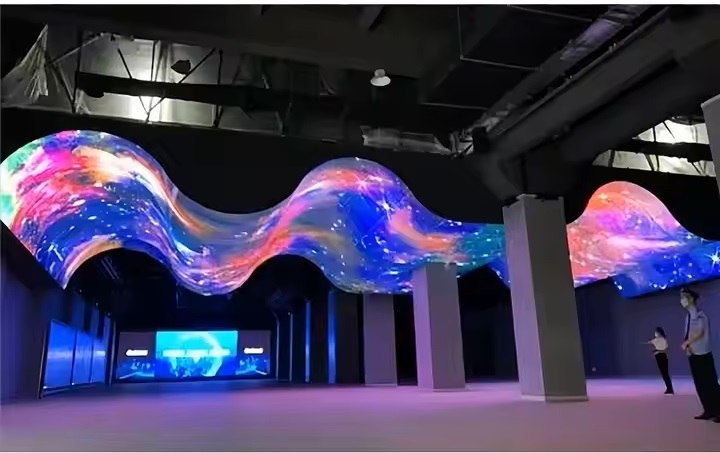I believe many customers who have used LED full-color displays have come into contact with and learned about the point by point calibration technology of LED displays, but do you understand why LED full-color displays need point by point calibration?

In an ideal situation, if the brightness and chromaticity of the light emitted by each pixel at any angle on an LED display screen are always consistent, then the display screen can be considered uniform. In the actual production process, the uniformity of the display screen will be affected by many factors, so the uniformity of LED displays without calibration cannot reach the ideal level, and there is a significant gap in image quality compared to other flat panel display technologies. There are many factors that can cause poor uniformity in LED displays, precum:
The inherent defect of LED’s discreteness:
(1) The LEDs provided by lamp manufacturers have differences in brightness and chromaticity;
(2) The spatial distribution characteristics of LED luminous intensity vary, which can lead to inconsistent attenuation values of luminous intensity relative to the optical axis direction for different LEDs at any viewing angle.
Many other factors introduced in the manufacturing process of display screens:
(1) Flatness of module assembly;
(2) Flatness of box assembly;
(3) The flatness of the mask and the dispersion of ink color;
(4) Uneven distribution of heat within the module;
Prin urmare, all LED screens have a certain degree of poor uniformity when they leave the factory, coupled with some problems caused by later use. After using LED full-color displays for a period of time, due to individual differences in LED light decay and other external factors, the uniformity will further deteriorate, manifested as a large number of pockmarks, bright and dark spots, and even mosaics on the display screen, commonly known as the “ecran de flori” phenomenon. So it is necessary to use point by point calibration technology to restore the normal display of the LED screen and achieve our satisfactory usage effect.
Whether before leaving the factory or after a period of use, point by point calibration technology can greatly improve the uniformity of the display screen in a very short time and at a very low cost, significantly improving image quality. Point by point calibration can extend the “eye pleasing lifespan” of LED full-color displays, create more commercial value for users, and reduce resource waste.
In prezent, the investment in LED full-color displays is often in the millions or even tens of millions, mostly used for commercial advertising and performances, with high requirements for the image quality of the display screen. The theoretical lifespan of LED display screens is 100000 ore, but in reality, after running for about 5000-10000 ore, a display screen will deteriorate in uniformity, begin to flower, and its commercial value will decrease. După 15000-20000 ore, its commercial value will be almost lost, causing great waste of social resources. Prin urmare, point by point calibration technology plays a crucial role in the normal display of LED display screens and is widely used by a large number of technical personnel in the LED display industry.